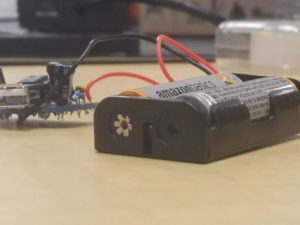RC Robot
The RC Robot is an Arduino based robot that is able to move front, back, and side to side, performing functions similar to that of a RC, however the challenge boils down to creating the robot purely based on hardware/software.
Engineer
Zachary G.
Area of Interest
ie Computer Science/Engineering
School
Lynbrook High School
Grade
Incoming Junior





